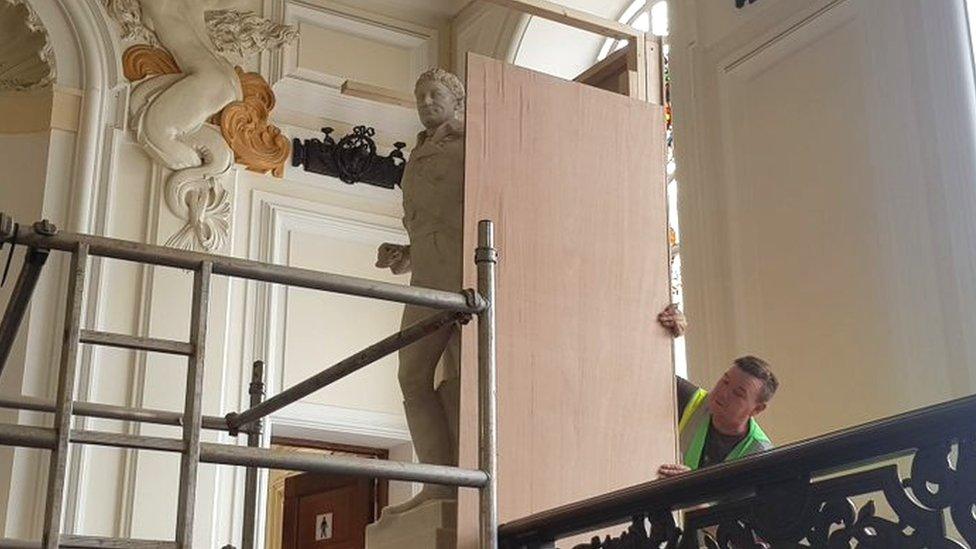Slave owner Sir Thomas Picton portrait returns in bid to reframe past
- Published
Gesiye worked in collaboration with musicians, designers, filmmakers and photographers to create the work
A portrait of slave owner Sir Thomas Picton has been put back on display, albeit boxed up-and alongside new artworks and information that "reframes" his place in history.
The portrait was removed from National Museum Cardiff in November following scrutiny of memorials to slave owners.
The museum commissioned two artworks from Trinidadian artists to reframe his legacy and give a voice to his victims.
Young people also worked with curators to provide additional context.
Previously, information accompanying the portrait of Picton, who was from Haverfordwest, Pembrokeshire, hailed him as a hero of the Battle of Waterloo.
It had not included his brutal treatment of the people of Trinidad, including the torture of 14-year-old Luisa Calderon.

Reframing Picton opens at National Museum Cardiff on 1 August
One of the new artworks - an installation called The Wound is a Portal - is by multidisciplinary artist Gesiye who is from Trinidad and Tobago and has Nigerian heritage.
Eight photographic portraits of Trinidadians baring tattoos and a short film adorn the walls of a dark room.
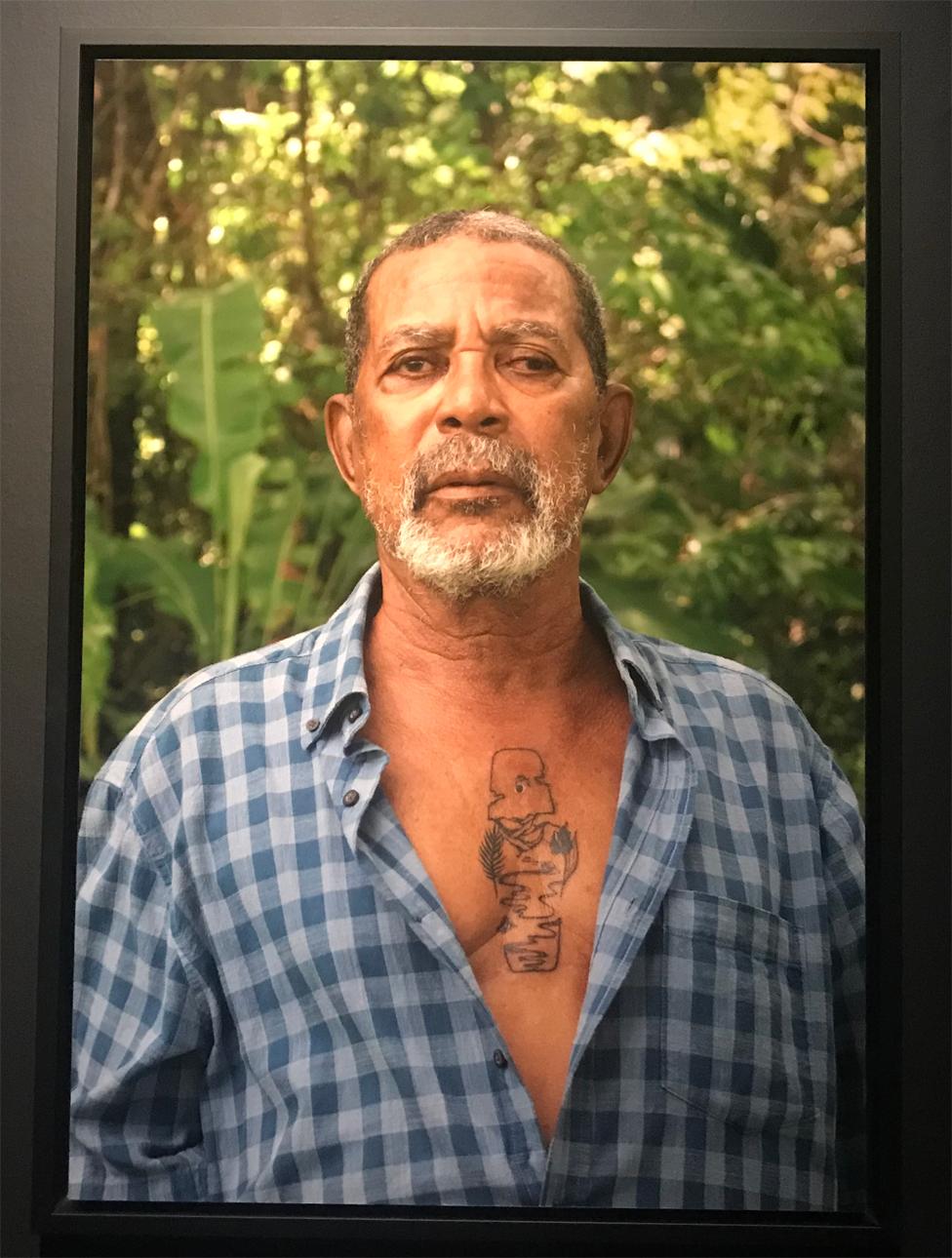
Artist Gesiye drew on the "cathartic process of tattooing to explore generational trauma"

Gesiye said she found black Trinidadians who were willing for her to tattoo them by placing adverts in newspapers and putting up flyers on all the streets in Trinidad named after Picton.
"I'm using tattooing to kind of bring people together to share this connected story, but also to create a space where we feel safe to have these conversations about things that are usually quite painful and that we might otherwise avoid talking about," she said.
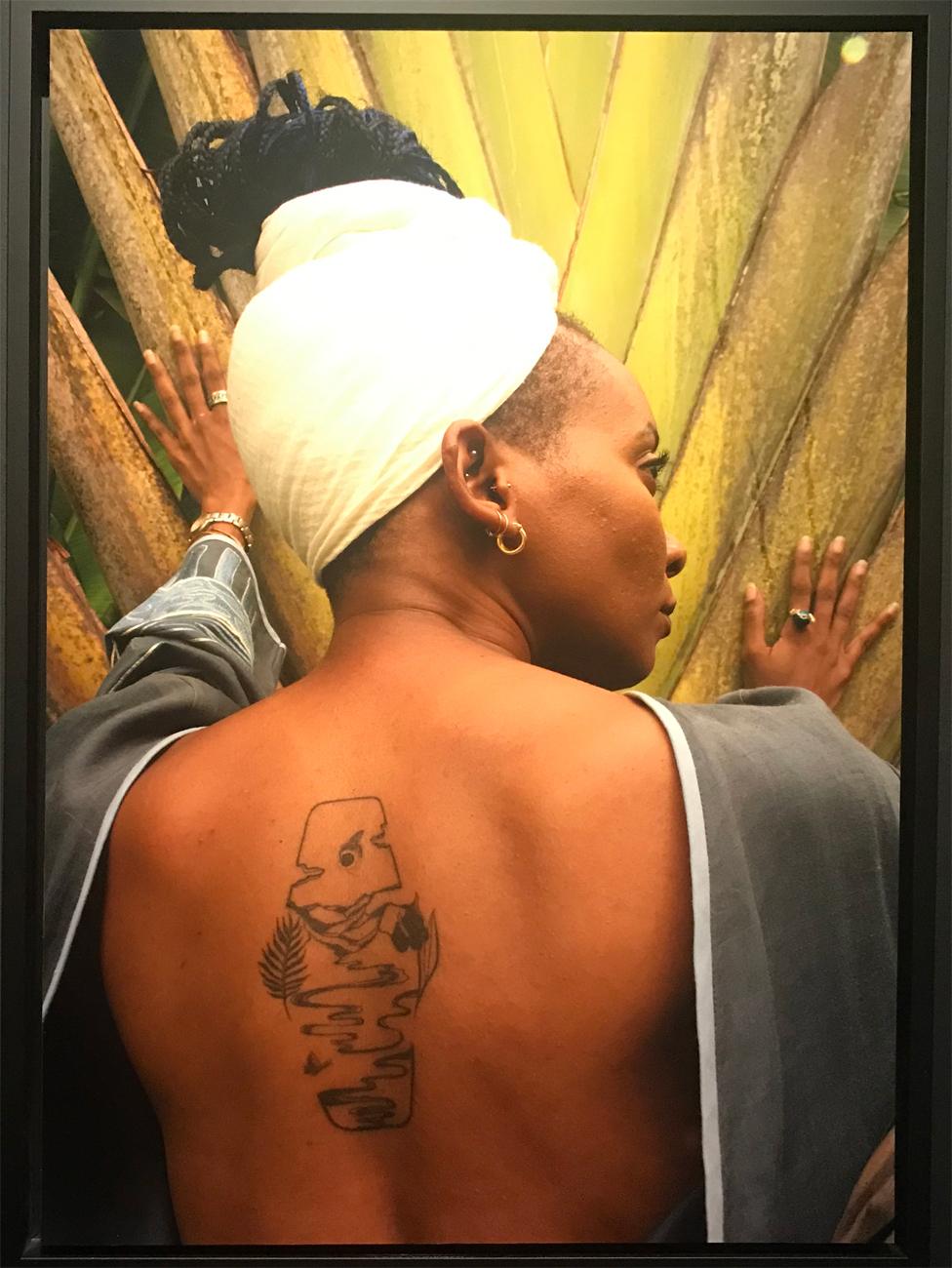
Gesiye worked in collaboration with musicians, designers, filmmakers and photographers

"My mother actually grew up on Picton Street - it is something that is very present in national consciousness".
Gesiye, who had travelled from Trinidad to see her installation at the museum, said she was struck by the size of Picton's portrait.


"It's massive, you can see the intention to make him very grandiose and to minimise some of the pain that he may have caused," she said.
When asked what should happen to other portraits, statues and streets named after Picton and other slave owners, she said there was "no one answer" which applied to all.
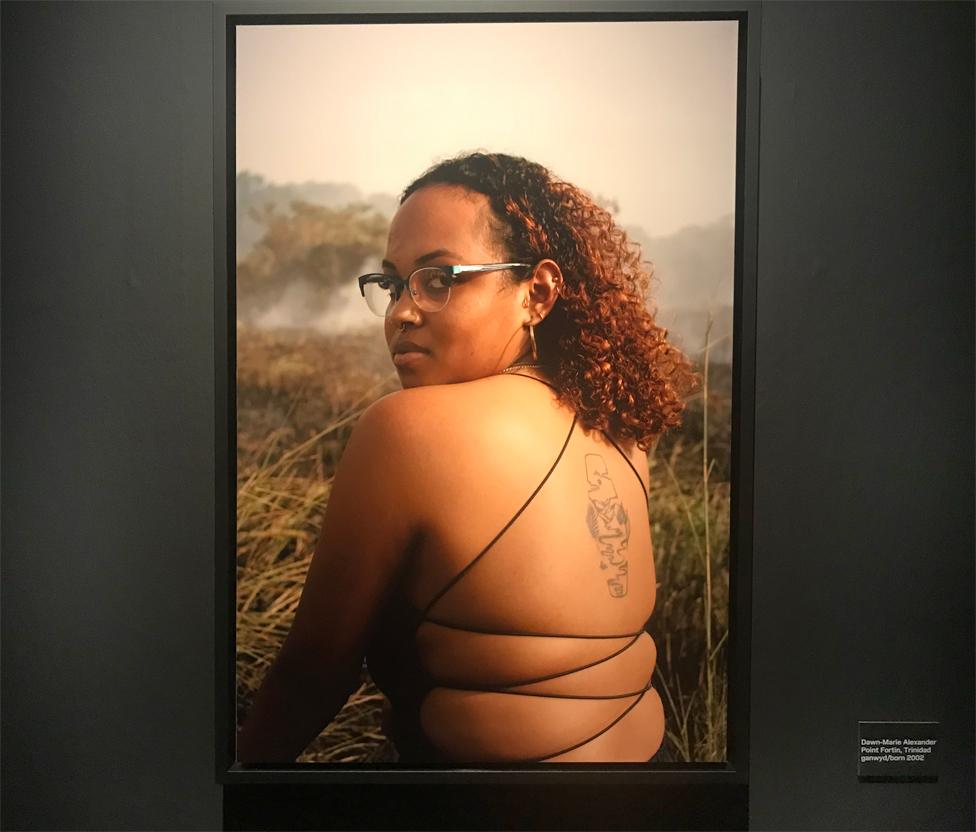
"History is really a story that's been told by someone who had power at that time," she said.
"It feels very important to do it like this".
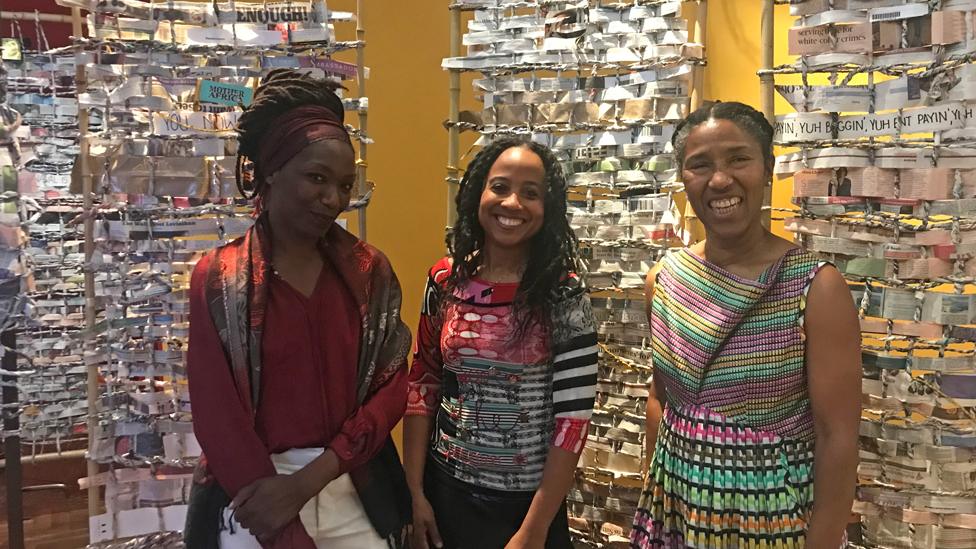
Artists Mary-Anne Roberts, Miguela Gonzalez and Adeola Dewis all have Trinidadian heritage and live in Cardiff
The second newly commissioned artwork - Spirited 2022 - is described as an ancestral work that honours African traditions, inspired by the Ol' Mas' traditions of the Trinidad and Tobago Carnival.
Visitors make their way through a walkway of metal sculpture, bamboo frames, twisted paper, found objects and audio-visual elements.
It was created by collective of four artists Laku Neg.
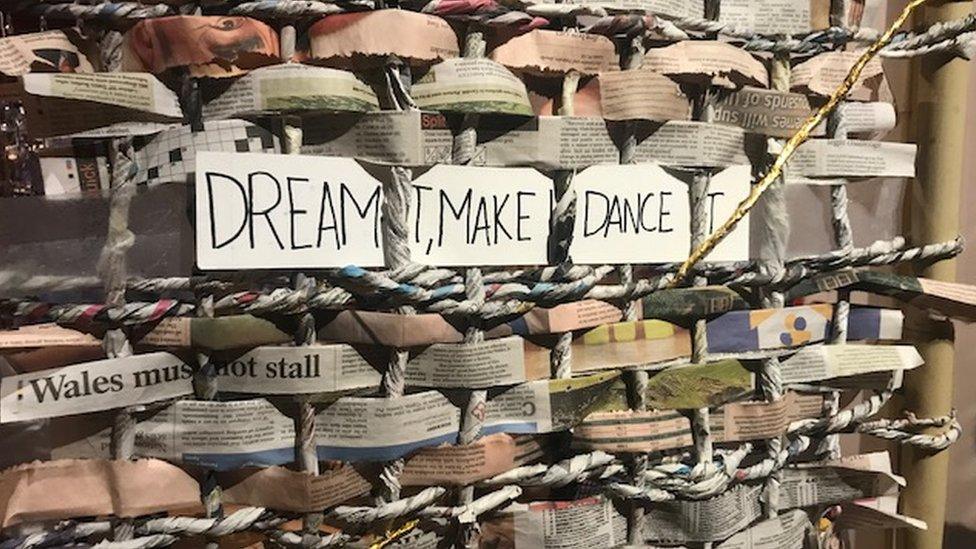
Artist Miguela Gonzalez said: "This is not a response to Picton himself, this is our understanding of our history and this is us filling in the gaps of a story."
She said they set out to tell the story of Luisa Calderon, the best-known of Picton's victims, as well as two other slaves - Present and Thisbe.
"We know that he pretty much tortured a 14-year-old girl for days and that was the legacy that he left for us in Trinidad," she said.
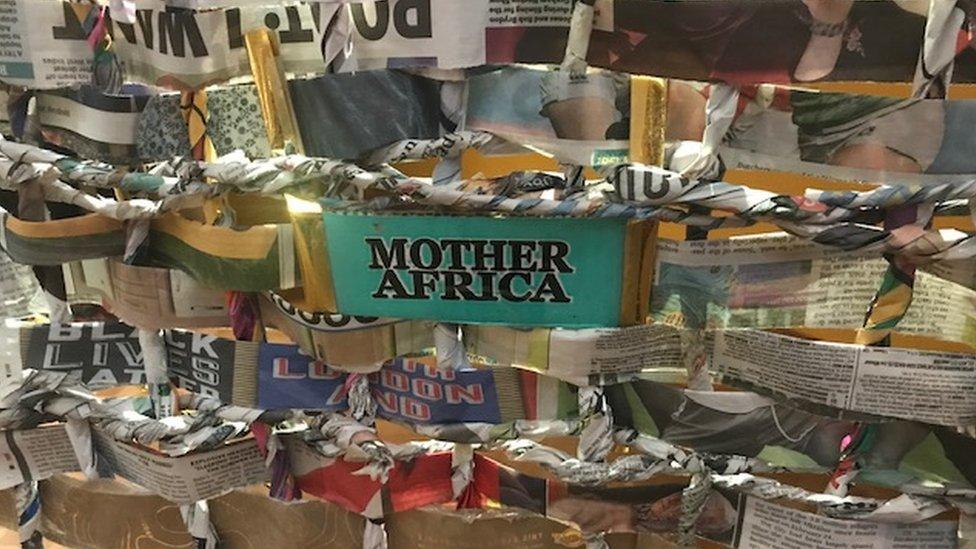
"That's our understanding of who he was and we know across the Atlantic that legacy is quite different."
She said Present was a slave who was caught trying to escape and hanged.
"She was a child who never had a childhood so we're trying to give her back her childhood through this art," she said.
"We're also representing Thisbe, who was accused of crimes and tortured in front of Luisa as a threat for Luisa to see 'if you don't confess this is what will happen to you'.
"She was tortured, after her death she was dismembered."
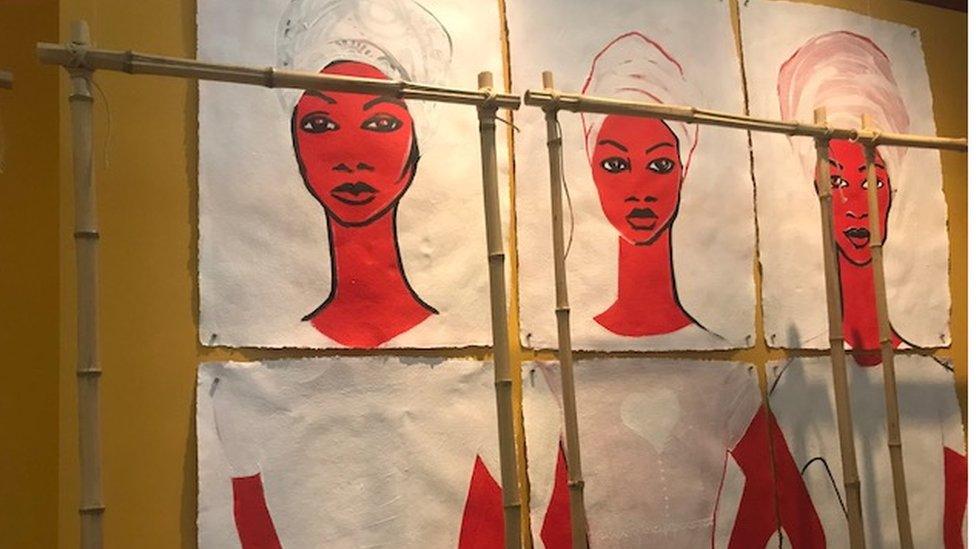
Spirited 2022 tells the story of three of Picton's victims
She said their focus had been on Picton's victims, rather than the man himself.
"If we were to be really frank we don't have any strong opinions about what should happen to the portrait - that has its context and if you explain what it means and you give a nuanced understanding of who that man was then that's fine," she said.
"Everyone should understand all the different variations of history, it is not black and white."
Artist Mary-Anne Roberts added: "This is the beginning of conversations with all sorts of communities and remembering that the museum is a palace of the people - let's get the people into our palace."
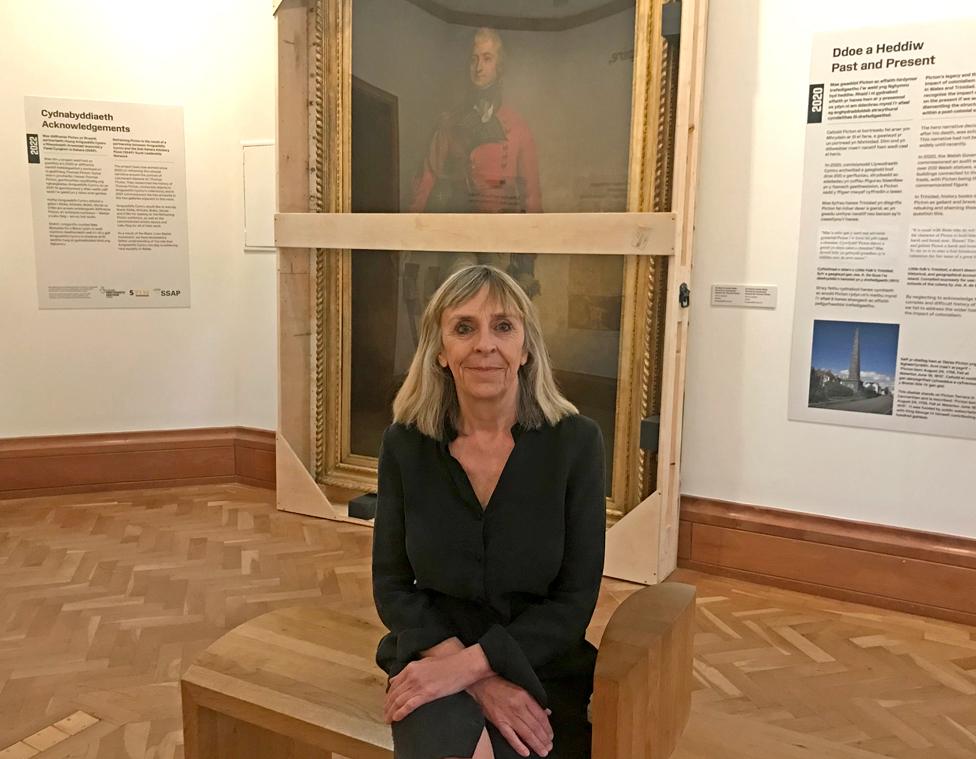
Dr Kath Davies says the long-term future of the Picton portrait is yet to be decided
'No neat narratives'
The Picton portrait is one of 209 memorials in Wales to people with links to slavery, identified by a 2020 audit.
The new exhibition came about after the museum called on the Sub-Sahara Advisory Panel (SSAP) to decide the future of the portrait, which had hung in the museum's Faces of Wales gallery.
The group said the painting should remain on display but with added detail about Picton's actions as a slave owner.
Dr Kath Davies, National Museum Wales' director of collections, said they had listened to community partners to gain different stories and different perspectives.
"There are no neat narratives to the story," she said.
"I think what you'll see here today is an exhibition which tries to cover all the aspects of Picton's life and Picton's activity, and I think it'll be up to the audience to make their minds up."
She said seeing the exhibition come to fruition had been joyful, adding: "It will underpin the way that the museum works in future."
Asked about the future for the still boxed-up portrait, she said: "Where the story goes next I think is the best question. The young people we've been working with haven't decided.
"And that's what's in some ways been so exciting or maybe challenging for this project - we've had to just take everything a step at a time and really listen, and we'll listen again about what the future of Picton will be."
Reframing Picton will be at National Museum Cardiff from 1 August to 3 September 2023

TANNI'S LIFETIME ROAD TO RECOVERY: Tanni Grey-Thompson reflects on key moments in her life
RESCUING DAD: Dai Chant returns to the sea after 30 years

- Published26 November 2021
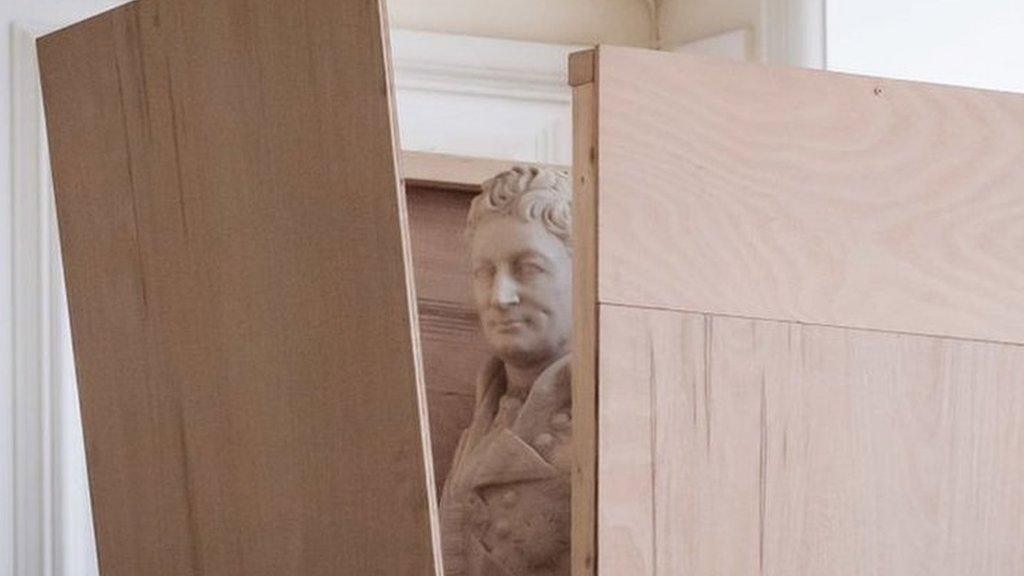
- Published5 October 2021
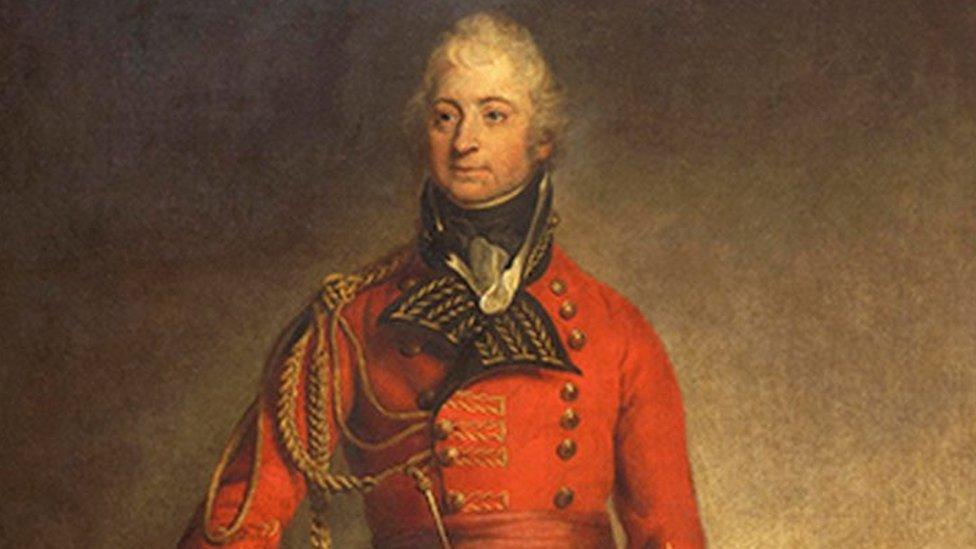
- Published18 June 2015

- Published12 June 2020
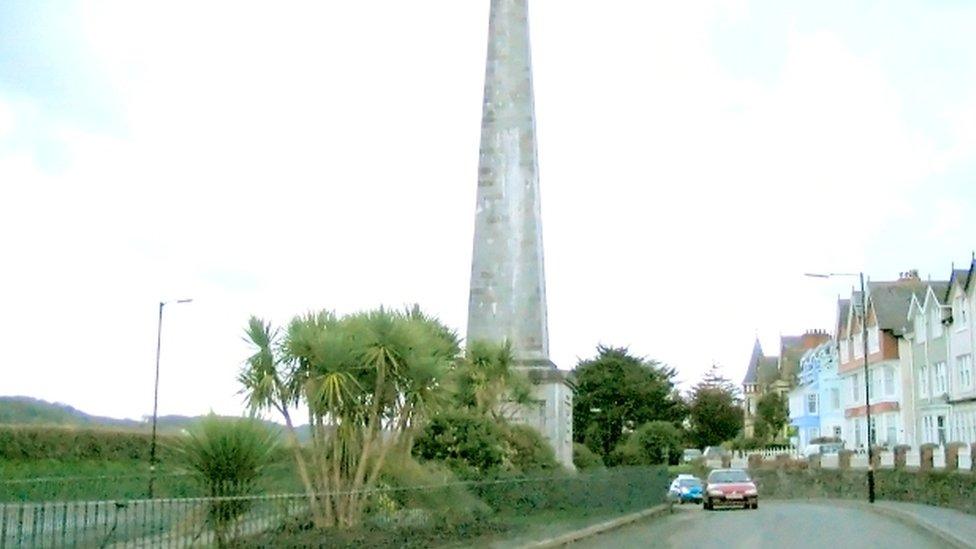
- Published24 July 2020
